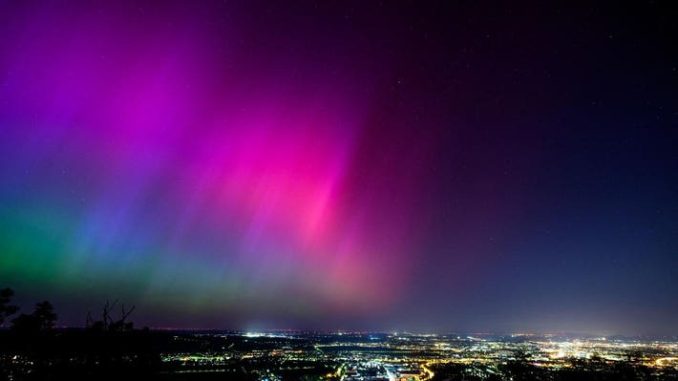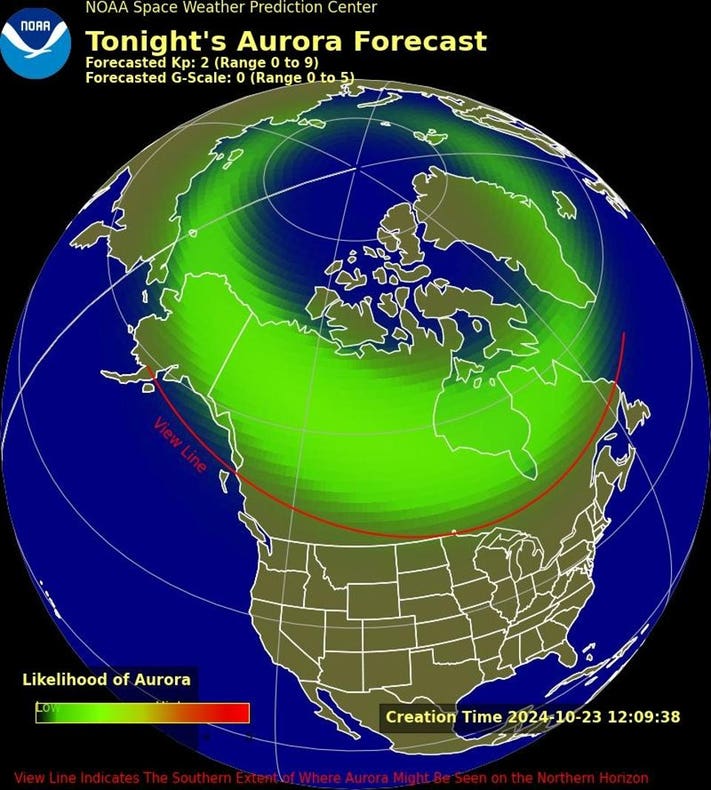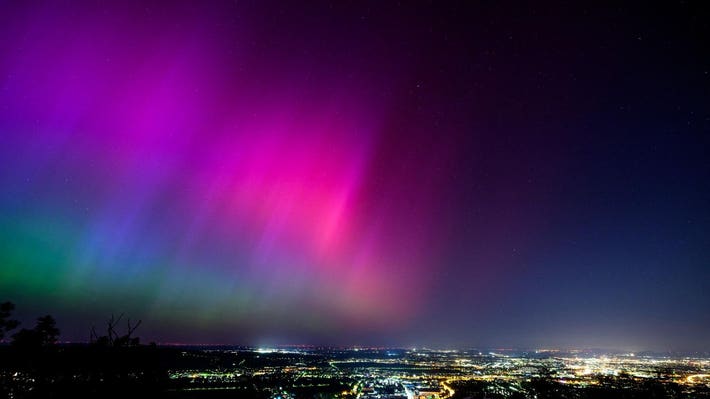
Aurora Alert: Northern Lights To Dazzle Us Again, Map Shows Where Aurora Borealis Would Appear Tonight
Some stargazers will have an opportunity to see aurora borealis in the northern U.S. Wednesday night, and it’s likely more chances will come as activity on the sun’s surface peaks, according to a National Oceanic and Atmospheric Administration forecast.
Key Facts
Wednesday night’s aurora borealis forecast has a Kp index of two on a scale of nine, meaning the northern lights will be seen farther north, not very active and “quite dim in intensity.”
No geomagnetic storms—caused by a burst of energy and particles released by the sun—are expected through Friday, according to the NOAA, decreasing the chances aurora borealis would be pushed toward the south and be more active.

Despite a weaker forecast, NOAA and NASA believe the sun’s 11-year cycle, Solar Cycle 25, has peaked, resulting in more chances to see the northern lights into 2025 and early 2026.
Where Will The Northern Lights Be Visible?
NOAA forecast a view line—indicating a minimal opportunity to see the northern lights—just below the Canadian border, though most of Alaska and Canada will have a high likelihood of seeing the phenomenon. A section of northern Minnesota will have a lower chance of seeing aurora borealis.
What’s The Best Way To See The Northern Lights?
A high vantage point away from light pollution is the best spot to see the northern lights, which peak between 10 p.m. and 2 a.m. local time, according to NOAA.

What’s The Best Way To Photograph The Northern Lights?
A regular camera with focus set to the farthest possible setting with a wide aperture, low shutter speed and high ISO value will be able to capture auroral activity, according to Adobe. If using a smartphone, Visit Iceland, Iceland’s tourism website, recommends turning on night mode with a low shutter speed.
Key Background
A “solar maximum” on the sun’s surface is indicated by more sunspots that result in “high-impact” space weather, according to NASA. This peak also includes more coronal mass ejections, or bursts of plasma and magnetic fields shot from the sun’s surface, that result in more geomagnetic storms on Earth and pull aurora borealis to the south. A “severe” geomagnetic storm earlier this month pushed aurora borealis as far south as Texas. Two comets and a meteor shower have also entered the night sky in recent weeks, including the Tsuchinshan-ATLAS comet, which NASA believes won’t be visible from Earth’s surface for another 80,000 years.
Leave a Reply